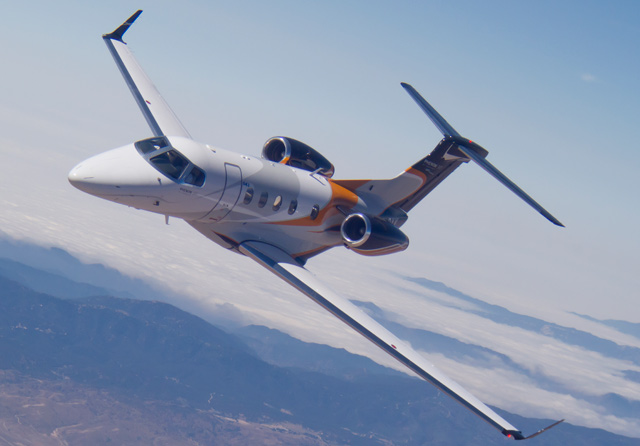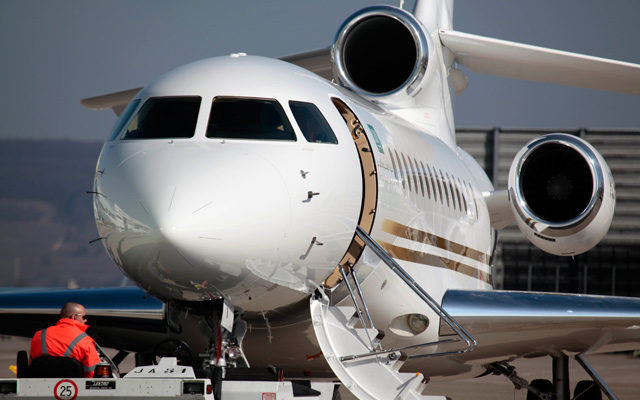Congonhas-São Paulo airport has always been an awkward site to host the Latin American Business Aviation Conference and Exhibition (LABACE) – the largest gathering of its type in the region.
It some ways, the growing Brazilian economy is to blame.
Demand from domestic airlines has transformed Congonhas into a slot-restricted airport. As a result, its metropolitan runway rarely welcomes the scores of business aircraft that will be showcased at LABACE from 12-14 August. Infraero, the Brazilian airports authority, prefers to keep Congonhas focused as a domestic hub for airlines, to the exclusion of business jets.
The show site itself – occupying an asphalt deck in front of an abandoned maintenance facility – is tucked into a remote corner of the cramped city airport, squeezed between a taxiway and Avenida Washington Luis – a major traffic artery in the south-central area of sprawling São Paulo.
However, LABACE’s crafty organisers make the most of this limited footprint. For three working days and festive nights, the site plays host to more than 16,000 attendees, 160 exhibitors and about 70 aircraft in a jigsaw-like display.

The country's rapidly expanding fleet includes 41 Phenom 300s
Embraer
The numbers in each category grow steadily every passing year, as both Latin American and Brazilian business aircraft fleets continue a steep and seemingly relentless expansion. Indeed, one major theme at LABACE this year will be confirming whether Brazil has eclipsed Mexico as the world’s second-largest base for business jets – after the USA.
Embraer statistics released earlier this year showed a tight race between the two Latin American national giants. At the end of the first quarter, Brazil’s fleet came in at 825 private jets to 830 in Mexico.
Mexico remains largely a secondary market for business aircraft, but the chance to claim the title of Latin America’s largest business jet operator is prized in Brazil.
As the domestic fleet grows, Brazilian infrastructure for business jet operations is starting to mature away from the busy taxiways of Congonhas.
Sprinkled around São Paulo state is a growing industry dedicated to supporting the jet-powered movement of executives and “high net-worth individuals”.
Indeed, the location that has captured the attention of the domestic business aircraft community this year is not the LABACE site at Congonhas, or even Embraer’s Phenom jet factory in Gavião Peixoto. The highlight of business aviation in Brazil this year is instead found in Sorocaba, a medium-sized city about 110km (68 miles) west of Congonhas.
It is here that Brazil’s new prominence as a premier business jet market is most apparent. In less than a year, Sorocaba’s Bertram Luiz Leupolz airport has blossomed as the regional and continental hub for maintenance, repair and overhaul (MRO) for business aircraft.
The ascension of Sorocaba as part of the region’s growth seems sudden, but in reality the area has been rising steadily for decades. To outsiders, the heart of Brazilian aerospace lies east of São Paulo in São José dos Campos – the home of Embraer’s commercial and product development. North of São Paulo, Embraer has opened business and military aircraft factories in the remote town of Gaviao Peixoto.
All along, however, the single-runway airport in Sorocaba has played a large role in supporting Brazil’s vast general aviation fleet. Brazilian civil aviation authority ANAC lists Sorocaba as the 14th-largest airport in Brazil in terms of aircraft movements, with 77,420 in 2012. The same statistics also reveal a lack of passengers, with only 77,776 recorded the same year.

Dassault's facility in Sorocaba supports 50 Falcon business jets
Embraer
Since 1962, Bertram Luiz Leupolz has served as the home of Conal, a full-service maintenance provider for private aircraft all over the region. A network of service providers has subsequently evolved around Conal’s 7,700m2 (82,900ft2) hangar over several decades. ANAC has listed 19 aircraft maintenance companies registered in Sorocaba alone.
More recently, business jet manufacturers themselves have moved into Sorocaba, but in a globally meaningful way. For decades, Brazil had been largely a secondary market in the business aviation landscape, where sales of used jets significantly outpaced deliveries of new models. As the country’s wealth has soared in the last decade, however, so has the appetite for business aviation. From 2009 to 2012, for example, Gulfstream reported its installed fleet in Brazil grew from 14 jets to 34. Dassault reported similar growth.
Not surprisingly, the largest beneficiary of Brazil’s rise in the business jet sector has been Embraer. The local manufacturer only entered the market in 2001 with the Legacy 600, a conversion of the ERJ-145 airliner.
The airframer introduced a new family of light jets with the Phenom 100 in 2008, and the 300 in 2009. The jets have sold well in North America, but their biggest market remains in Brazil. As of the end of the first quarter, Embraer’s installed base in Brazil now counts 89 Phenom 100s, 41 Phenom 300s, 18 Legacy 600s, 10 Legacy 650s and three Lineage 1000s.
As fleets have climbed into the dozens for each manufacturer, so has interest in the aftermarket. For many years, manufacturers were content to hand off product support to local partners in Brazil – but no more. The Brazilian market has evolved a competitive model that demands establishing a large local presence.
Dassault arrived in 2009, opening a 2,140m2 maintenance facility in Sorocaba. The facility supports the 50 Falcon business jets now based in Brazil. The unit is a full-service facility, offering airframe inspections, line maintenance and engine maintenance.
Gulfstream has also been active in Sorocaba. In 2012 it rebranded and upgraded the Jet Aviation Sorocaba facility as Gulfstream Brazil, putting the centre on an equal footing with Gulfstream Luton and Gulfstream Beijing. Earlier this year, Gulfstream moved into an even larger hangar at Sorocaba airport.
Brazil’s local aircraft manufacturer has not stood still, however. In November, Embraer opened a 20,000m2 facility on the other side of the Sorocaba runway from Gulfstream and Dassault. Here, Embraer will take its next step as an business jet manufacturer.
The Phenom 100 and 300 entered service five years ago, which means the five-year inspection interval is now beginning. As Brazil’s business aviation industry has matured, so has Embraer’s capabilities. Embraer officials claim the MRO hangar will be the largest of its kind in Brazil. The facility includes shops for component repair, as well as the broad capability to complete maintenance inspections.
In March, Embraer also opened a fixed-based operation within the MRO facility at Sorocaba. The timing matched the build-up to the World Cup in Brazil, but only barely. In mid-May, construction workers were still paving a large parking ramp adjacent to the Embraer hangar – originally intended to support World Cup demand.
Next door to Embraer’s hangar, another facility is under construction. In size and design it appears to strongly resemble the Embraer structure, but it does not belong to the company.
The new tenant of the facility has not been announced, but there are hints of its identity.
Among large-cabin business jet manufacturers, only Bombardier still lacks a presence in Sorocaba. The company has an established support network spread across Brazil, but no dedicated facility on the scale of its rivals in Sorocaba. However, that omission may be changing. As Embraer opened its fixed-base in March, local press reports quoted local officials speculating that Bombardier was the tenant of the hangar now under construction.
Source: FlightGlobal.com



















